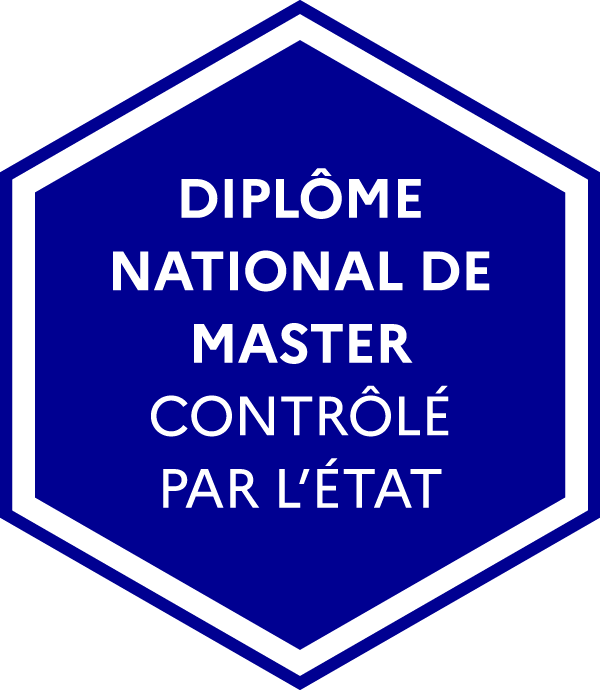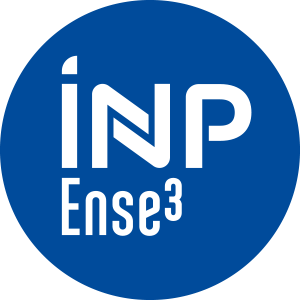Number of hours
- Lectures 46.0
- Projects -
- Tutorials 60.0
- Internship -
- Laboratory works -
- Written tests -
ECTS
ECTS 5.0
Goal(s)
The objectives of the module is to fulfil with HCERES recommendation about French course in Master degree fully taught in English.
At the same time we issued a course about innovation to fulfil with the Innoenergy spirit. The choice was to include innovative problem solving. This part of the module is dedicated to methods derived from TRIZ methodology and to make the student active learners applying engineers methods to solve complex problem with smart and rigorous approach based on patent database analysis.
Two major decoupled parts in the module:
The innovation part is related to problem solving and the methodology proposed is the TRIZ method. The major objective is thus to learn and apply the very engineer focus problem soving method.
TRIZ (/?tri?z/; Russian: ?????? ??????? ???????????????? ?????, teoriya resheniya izobretatelskikh zadach, literally: "theory of the resolution of invention-related tasks") is "a problem-solving, analysis and forecasting tool derived from the study of patterns of invention in the global patent literature". It was developed by the Soviet inventor and science-fiction author Genrich Altshuller (1926-1998) and his colleagues, beginning in 1946. In English the name is typically rendered as "the theory of inventive problem solving",[2][3] and occasionally goes by the English acronym TIPS.
Following Altshuller's insight, the theory developed on a foundation of extensive research covering hundreds of thousands of inventions across many different fields to produce a theory which defines generalisable patterns in the nature of inventive solutions and the distinguishing characteristics of the problems that these inventions have overcome.
An important part of the theory has been devoted to revealing patterns of evolution and one of the objectives which has been pursued by leading practitioners of TRIZ has been the development of an algorithmic approach to the invention of new systems, and to the refinement of existing ones.
TRIZ includes a practical methodology, tool sets, a knowledge base, and model-based technology for generating innovative solutions for problem solving. It is intended for application in problem formulation, system analysis, failure analysis, and patterns of system evolution. There is a general similarity of purposes and methods with the field of pattern language, a cross discipline practice for explicitly describing and sharing holistic patterns of design.
The research has produced three primary findings:
problems and solutions are repeated across industries and sciences
patterns of technical evolution are also repeated across industries and sciences
the innovations used scientific effects outside the field in which they were developed
TRIZ practitioners apply all these findings in order to create and to improve products, services, and systems.
The second part of the module is about French language.
European framework – CECR Levels (A1, A2, B1, B2, C1)
Courses allow students to learn general French, whatever their levels from complete beginner (A1 - Can understand and use everyday expressions in simple concrete situations) to advanced (C1 - Can understand a variety of long and complex texts and perceive the implicit meanings. Controls the organization and cohesion tools of the language).
Raphaël CAIRE
Content(s)
Two major decoupled parts in the module:
The innovation part is related to problem solving and the methodology proposed is the TRIZ method. The major objective is thus to learn and apply the very engineer focus problem soving method.
TRIZ (/?tri?z/; Russian: ?????? ??????? ???????????????? ?????, teoriya resheniya izobretatelskikh zadach, literally: "theory of the resolution of invention-related tasks") is "a problem-solving, analysis and forecasting tool derived from the study of patterns of invention in the global patent literature". It was developed by the Soviet inventor and science-fiction author Genrich Altshuller (1926-1998) and his colleagues, beginning in 1946. In English the name is typically rendered as "the theory of inventive problem solving",[2][3] and occasionally goes by the English acronym TIPS.
Following Altshuller's insight, the theory developed on a foundation of extensive research covering hundreds of thousands of inventions across many different fields to produce a theory which defines generalisable patterns in the nature of inventive solutions and the distinguishing characteristics of the problems that these inventions have overcome.
An important part of the theory has been devoted to revealing patterns of evolution and one of the objectives which has been pursued by leading practitioners of TRIZ has been the development of an algorithmic approach to the invention of new systems, and to the refinement of existing ones.
TRIZ includes a practical methodology, tool sets, a knowledge base, and model-based technology for generating innovative solutions for problem solving. It is intended for application in problem formulation, system analysis, failure analysis, and patterns of system evolution. There is a general similarity of purposes and methods with the field of pattern language, a cross discipline practice for explicitly describing and sharing holistic patterns of design.
The research has produced three primary findings:
problems and solutions are repeated across industries and sciences
patterns of technical evolution are also repeated across industries and sciences
the innovations used scientific effects outside the field in which they were developed
TRIZ practitioners apply all these findings in order to create and to improve products, services, and systems.
The second part of the module is about French language.
European framework – CECR Levels (A1, A2, B1, B2, C1)
Courses allow students to learn general French, whatever their levels from complete beginner (A1 - Can understand and use everyday expressions in simple concrete situations) to advanced (C1 - Can understand a variety of long and complex texts and perceive the implicit meanings. Controls the organization and cohesion tools of the language).
Written and oral French conversation in the areas of every day and student life.
Active and communicative methods around 4 skills (written & oral comprehension, written & oral presentation) are offered to groups (from 8 to 12 students) of different levels based on the Common European Framework of Reference (from absolute beginners to “independent” students).
• Intensive classes (up to 20 hours per week in summer sessions)
• Extensive classes
• Day or evening classes
• Private tutoring (for one to three students)
none
Continuous assessment (CC) only, no retake:
- 50% presentation and report for the TRIZ innovative problem solving
- 50% French courses assessments :
- 50% grade from the intensive week French course (50%)
- 50% grade from the 40h of French courses along the semester (or 100% of French grade for students who have not been able to take the intensive week French course)
CC 100%
The exam is given in english only 
The course exists in the following branches:
- Curriculum - Master inter SGB - Semester 9 (this course is given in english only
 )
)
Course ID : WEU3FLE6
Course language(s): 
You can find this course among all other courses.
French State controlled Master's degree




